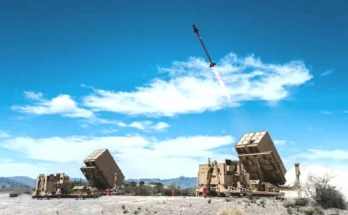by Shaun McDougall, Military Markets Analyst, Forecast International.

The U.S. House and Senate have signed off on an FY17 defense policy bill that would halt ongoing end strength reductions, but the legislation does not include a House proposal to shift billions of dollars to bolster procurement programs. The bill, which cleared the House on December 2 (375-34) and the Senate on December 8 (92-7), authorizes $543.4 billion in base spending for the Department of Defense and nuclear functions within the Department of Energy, plus $67.8 billion for Overseas Contingency Operations. The latter includes $8.3 billion set aside for base budget requirements, comprising $5.1 billion requested by the administration and $3.2 billion added by lawmakers for additional troops. The bill also includes funding to pay for a November 2016 supplemental budget request submitted by the White House that contained $5.8 billion for operations in Iraq, Afghanistan, and Europe. The supplemental contained $529.9 million in additional acquisition funding.
The FY17 request sought to shrink the active Army to 460,000 troops, down from 475,000 in FY16. The authorization bill goes in the opposite direction – raising the number of troops to 476,000, just shy of the 480,000 in the House markup. The conference bill would also authorize an additional 3,000 Marines, 4,000 airmen, and 1,000 sailors. In the Reserve component, the bill would provide the Army National Guard with 343,000 troops, compared to 335,000 in the request. The Army Reserve would have an authorized end strength of 199,000, rather than 195,000 supported by the FY17 request. Defense Secretary Ash Carter was wary of the House proposal to increase end strength due to budget caps that remain in effect until FY21, but Republicans are now in a position to alter those caps to increase the defense topline.
A major component of the House bill that did not make it into the final conference agreement was a proposal to shift around $18 billion within the OCO account to pay for base budget priorities as a way to sidestep the budget caps. Within that transfer was some $10 billion for weapons procurement, including funding for additional aircraft and warships. The move would have drained the OCO account by April 2017, leaving military operations unfunded beyond that point and requiring a supplemental request from the incoming administration.
Lawmakers haven’t given up on pushing for more acquisition funding, but wanted to halt end strength reduction first.. The armed services committees felt it would be easier to stop the end strength reduction immediately and seek additional procurement dollars later, rather than fund procurement programs now while attempting to rebuild the force after troop cuts had already taken place.
House Armed Services Committee Chairman Mac Thornberry (R-Texas) said he was disappointed that funding for weapons systems was removed from the joint authorization agreement, but hopes the Trump administration will send lawmakers a supplemental funding request to recoup that money. Vice President-elect Mike Pence has said that, within its first 100 days in office, the administration plans to do just that. Congressional appropriators have already delayed their markup of the FY17 defense bill until spring in hopes of getting the next administration to sign off on a larger budget. For now, the Pentagon is stuck with yet another continuing resolution until an FY17 budget can be passed.
Please feel free to use this content with Forecast International and analyst attributions, along with a link to the article. Contact Ray Peterson at +1 (203) 426-0800 or via email at ray.peterson@forecast1.com for additional analysis.
Forecast International’s U.S. Defense Budget Forecast covers every Procurement and RDT&E line item – from the President’s Request to the final joint congressional action – with links to corresponding justification documents (PEDs), historical funding and 10-year forecasts.
For 50 years, Forecast International intelligence reports have been the aerospace and defense industry standard for accurate research, analysis, and projections. Our experienced analysts compile, evaluate, and present accurate data for decision makers. FI's market research reports offer concise analysis of individual programs and identify market opportunities. Each report includes a program overview, detailed statistics, recent developments and a competitive analysis, culminating in production forecasts spanning 10 or 15 years. Let our market intelligence reports be a key part of reducing uncertainties and mastering your specific market and its growth potential. Find out more at www.forecastinternational.com




